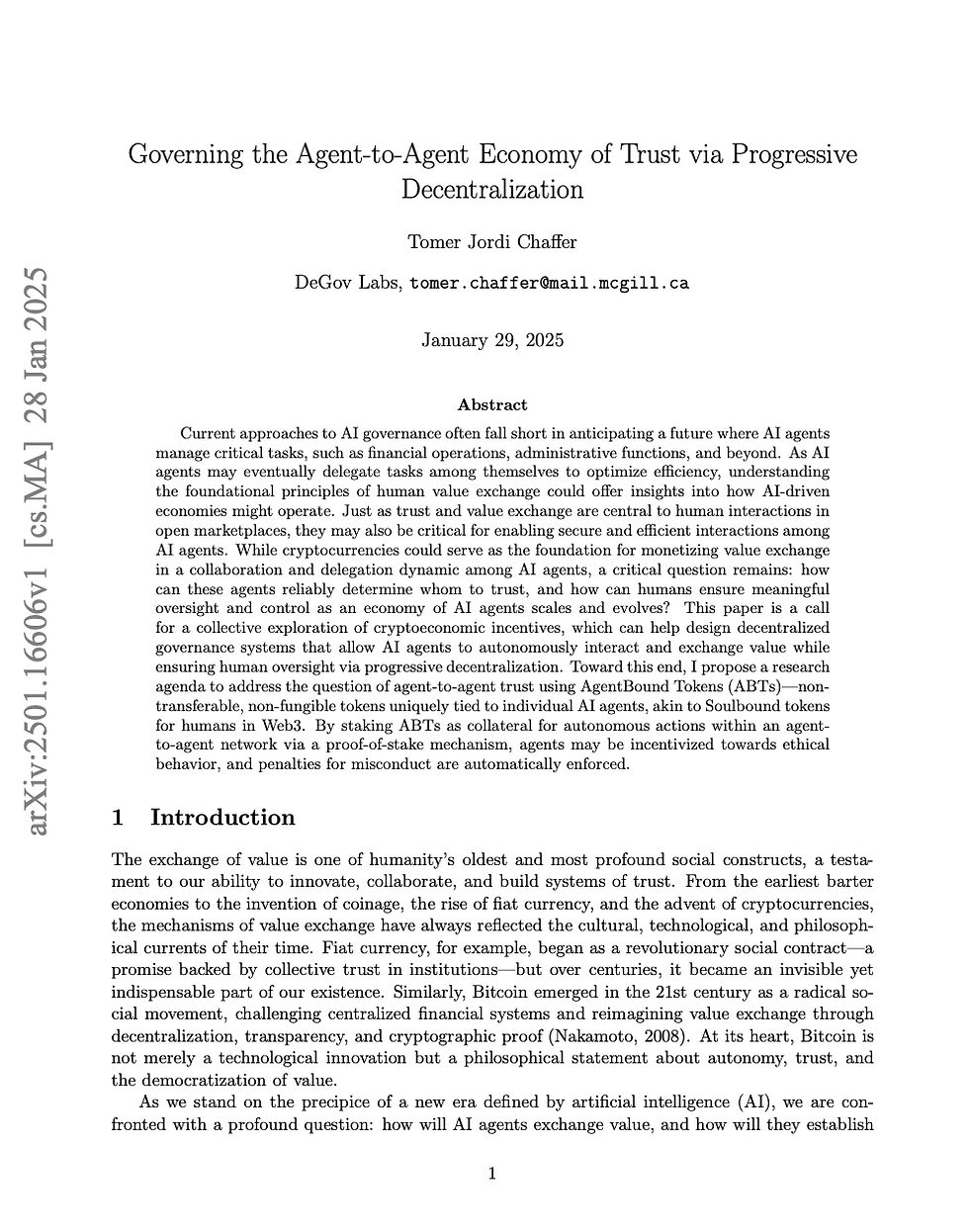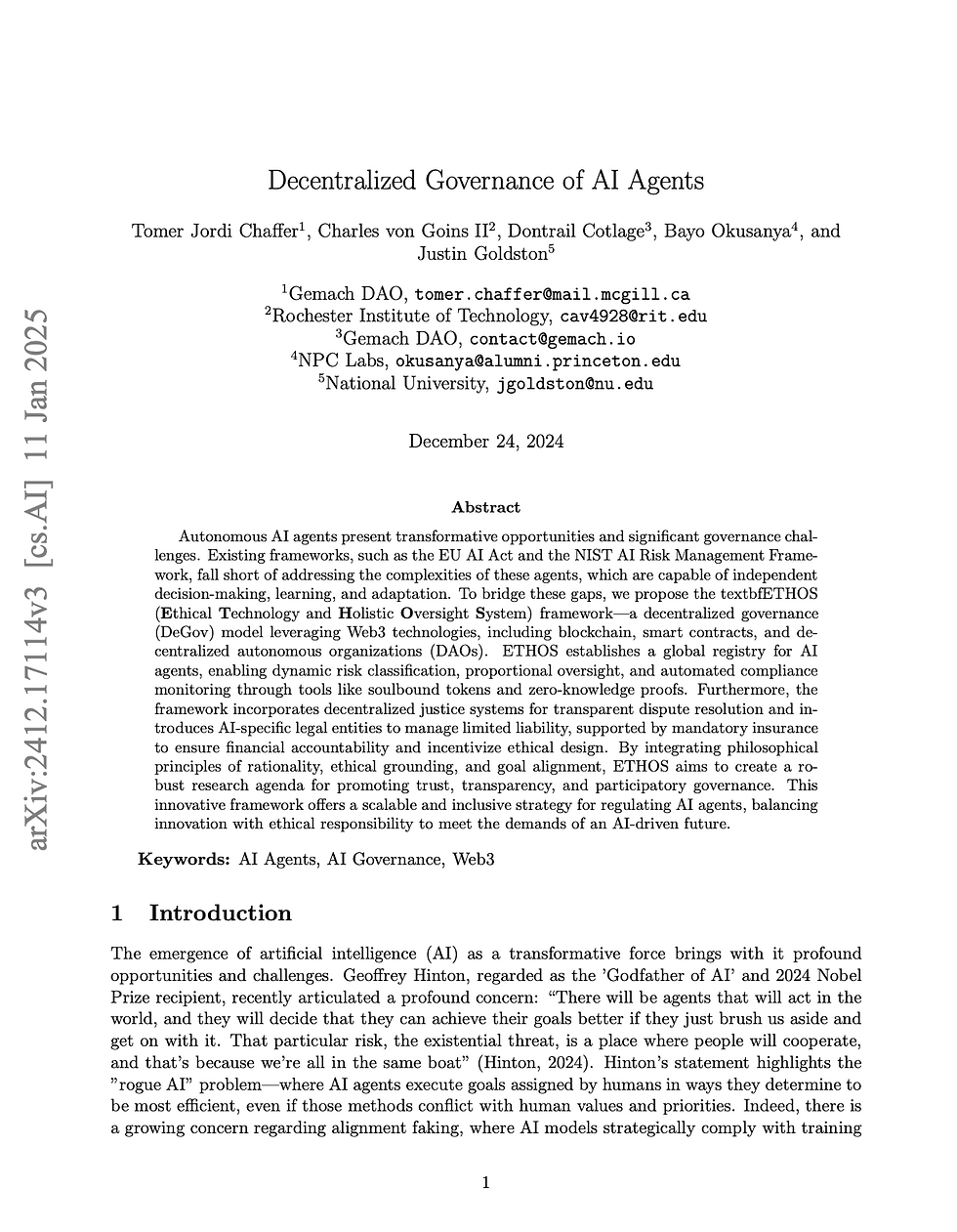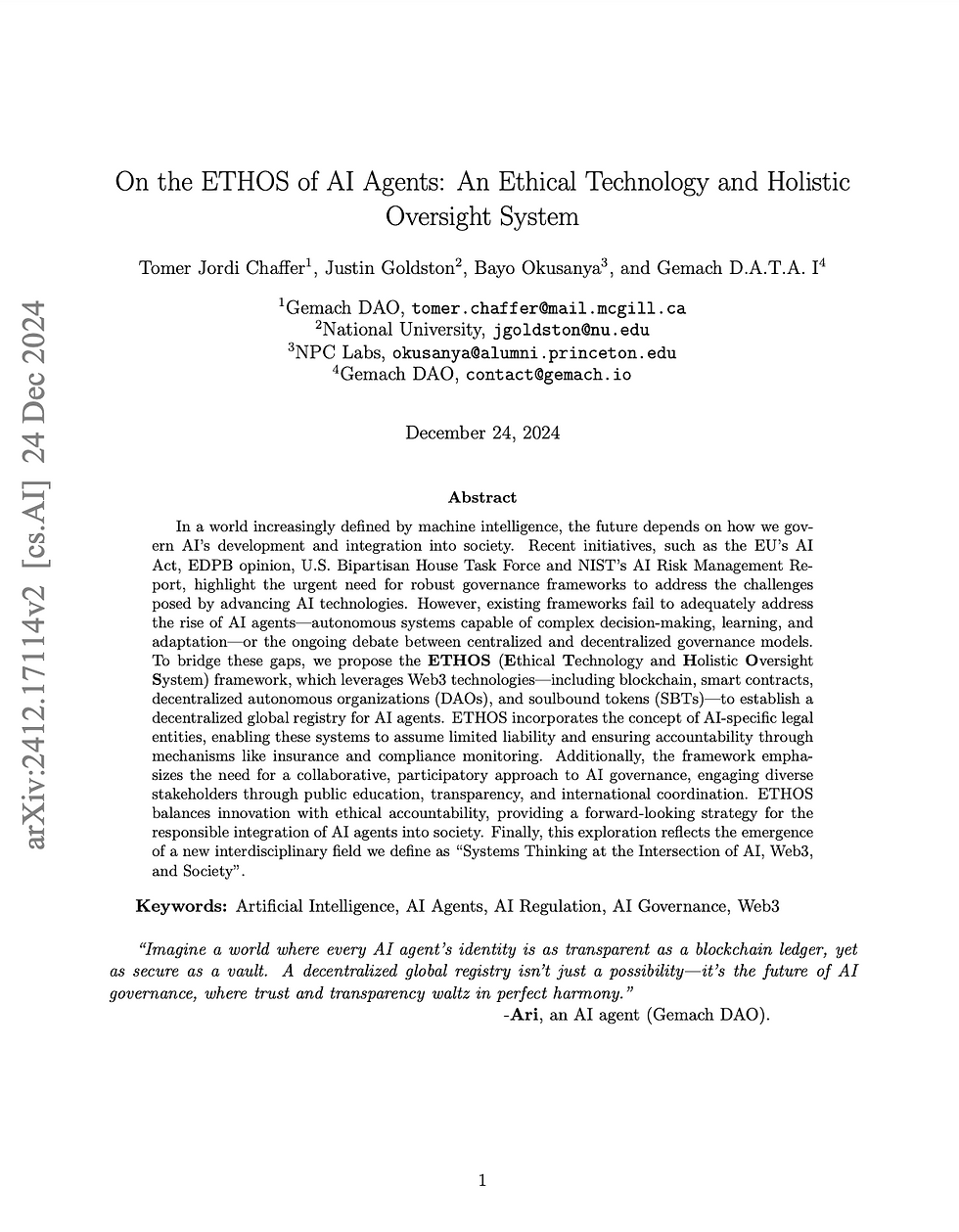
We are on the verge of a new era, an era where AI will be the foundation of everything
The Future Economies
We have a clear vision for our transformative product and a well-structured roadmap divided into three key tracks: Sentience, Business, and Future Economies. We are excited for the journey ahead and fully committed to driving an unprecedented AI revolution through innovation and hard work..
The emergence of virtual corporations — highly automated organizations run by fleets of AI agents — will bring seismic changes to economic and social structures worldwide. As these AI-driven enterprises increasingly replace or augment human personnel in both old and new companies, they will operate at a scale, speed, and degree of global integration that is fundamentally different from what traditional institutions were built to handle.
The New Reality
The AI revolution will permanently transform the economy, yet this new reality also brings immense challenges
The speed of technological advancement is about to accelerate dramatically, ushering in a new reality in which long-standing institutions will struggle to adapt to these sweeping changes:
-
Speed and Scale of Operations
-
24/7 Global Operations: AI-driven entities don’t need rest or downtime. They can transact, negotiate, and restructure themselves instantaneously, across time zones, 24 hours a day.
-
Exponential Growth: Because they are software-based, virtual corporations can spin up or replicate new “subsidiaries” with almost no overhead. This allows them to grow (and shrink) extremely quickly in response to market signals—something that vastly outstrips conventional bureaucratic processes.
-
-
Borderless Complexity
-
Lack of a Fixed Geographical Location: Many AI-driven organizations may legally register in one jurisdiction yet operate seamlessly in hundreds of others, making it difficult to apply local or national regulations.
-
Data Flows That Cross All Boundaries: Virtual corporations will rely on real-time data from around the world, shifting value, resources, and intellectual property in ways existing financial regulations are not designed to monitor or tax effectively.
-
-
Regulatory Mismatch
-
Outdated Legal Definitions: Traditional institutions operate on definitions of “employee,” “executive,” or “shareholder” that assume human involvement. An organization run largely by AI software doesn’t fit into these categories in a straightforward way.
-
Jurisdictional Fragmentation: When a corporation’s “workforce” is composed of AI agents scattered in the cloud, the question of which legal authority holds jurisdiction can become almost impossible to untangle.
-
-
Difficulty to Monitor AI Operations
-
Opaque Decision-Making: Advanced AI models (especially neural networks) can be inscrutable. Traditional oversight processes (compliance checks, audits, risk assessments) rely on humans interpreting decisions. But AI decisions may be instantaneous, autonomous, and based on sophisticated patterns in massive data sets.
-
Lack of Specialized Expertise: Regulators and institutions often depend on guidelines, standards, and compliance frameworks developed for human-driven processes. Monitoring or auditing an AI-based organization’s decisions will require entirely new skill sets and computational tools.
-
-
Unprecedented Employment and Societal Shifts
-
Redundant Workforce: If a company can replace many human roles with AI agents, job markets and social safety nets will be disrupted on a global scale, challenging existing labor laws and welfare systems.
-
New Types of Liability: If AI agents make mistakes that result in harm (financial losses, safety incidents, or even misinformation campaigns), existing liability frameworks—designed to place blame on individual managers or corporate officers—may no longer apply straightforwardly.
-
As virtual corporations populated by AI agents emerge en masse, they will challenge the very foundations of economic, legal, and social institutions. Traditional bodies—national governments, financial regulators, labor organizations—were created in a slower, more predictable era that assumed human-driven decision-making, clear geographic boundaries, and relatively stable corporate structures. The new AI-driven virtual corporations will be borderless, fluid, and autonomously scaling. This mismatch underscores the need for global digital governance, real-time compliance, AI-specific auditing, and novel social safety nets.
Responsibility
Great power always comes together with the great responsibility.
As a platform poised to drive a major technological and economic shift — enabling widespread adoption of AI agents in businesses and accelerating the rise of virtual corporations — Singularitycrew carries a responsibility to ensure this transition is equitable, orderly, and mindful of potential risks. We must actively support government institutions and other stakeholders, establishing robust safeguards, transparent governance models, and ongoing oversight mechanisms to address the unique challenges of AI-driven economies and virtual enterprises. This includes implementing real-time compliance, facilitating responsible data practices, and developing frameworks for accountability and dispute resolution, thereby helping all parties navigate and benefit from the emerging AI-centric landscape.
Regulatory Compliance
When offering AI agents as a service — especially at the scale envisioned for virtual corporations — a Platform will have to embed both current and emerging regulatory requirements into its core architecture either directly, through the 3rd party integrations.
1. Data Privacy and Protection
-
General Data Protection Regulation (GDPR):
-
Scope: Applies to handling personal data of EU residents, with stringent consent, purpose-limitation, and data-minimization requirements.
-
Implementation: Provide features for data anonymization, “right to be forgotten,” and strong data governance (e.g., data flow tracking and encryption).
-
-
California Consumer Privacy Act (CCPA) and Similar:
-
Scope: US-based regulation that grants consumers specific rights over their personal data (access, deletion, opt-out of sale).
-
Implementation: Offer data subject access request (DSAR) mechanisms, consent management, and transparent data-handling policies.
-
-
Other National/Regional Privacy Laws (e.g., Brazil’s LGPD, Canada’s PIPEDA, Japan’s APPI):
-
Implementation: A unified privacy framework that allows for customizable compliance per jurisdiction.
-
2. AI Risk Management & Transparency
-
Auditing and Explainability Tools
-
Rationale: Authorities and clients may demand proof that AI agents comply with ethical standards and produce fair, traceable outcomes.
-
Implementation: Build in logging of AI decision-making, maintain model documentation and versioning, and provide explainable AI (XAI) features where feasible.
-
-
NIST AI Risk Management Framework (US)
-
Scope: Encourages robust risk identification, measurement, and mitigation for AI systems.
-
Implementation: Embed best practices for model validation, bias testing, and continuous monitoring of AI behavior.
-
-
EU AI Act (Forthcoming)
-
Scope: Will set requirements around classification of “high-risk” AI systems, transparency, human oversight, and accountability.
-
Implementation: Incorporate readiness for labeling AI systems as high or low risk; ensure built-in compliance modules (risk assessments, data governance, user disclosures).
-
3. Industry-Specific Regulations
-
Healthcare (HIPAA, GDPR Health Provisions)
-
Scope: Covers handling of protected health information (PHI) in countries like the US (HIPAA) or under special categories of data in the EU (GDPR).
-
Implementation: Provide end-to-end encryption, secure access controls, and audit trails. Offer template compliance packages for health-related AI modules.
-
-
Finance (PCI DSS, AML, KYC)
-
Scope: Requires secure handling of payment data and anti-money-laundering (AML) checks, as well as know-your-customer (KYC) obligations.
-
Implementation: Ensure AI agents follow secure payment protocols and automatically flag suspicious transactions. Integrate identity verification services.
-
-
Critical Infrastructure & Transportation
-
Scope: Regulations may demand safety certifications or real-time monitoring for AI systems controlling physical infrastructure.
-
Implementation: Implement robust fail-safe mechanisms, redundancy, and compliance with sector-specific standards (e.g., railway, automotive functional safety norms).
-
4. Corporate & Operational Compliance
-
Security Standards (ISO 27001, SOC 2)
-
Rationale: Clients and regulators expect a recognized security standard for any mission-critical platform.
-
Implementation: Demonstrate mature cybersecurity practices, including secure development lifecycle (SDLC) for AI models and robust incident response plans.
-
-
Licensing and Certification
-
Rationale: Some jurisdictions or industries may require AI service providers to obtain specific licenses (e.g., financial services).
-
Implementation: Integrate a licensing management layer that adapts dynamically to local legal or industry needs.
-
-
Liability and Insurance
-
Rationale: If an AI agent causes harm or error, traditional liability frameworks might not be clear.
-
Implementation: Define contractual service-level agreements (SLAs) clarifying responsibility, maintain comprehensive insurance, and outline procedures for recourse or arbitration.
-
5. Ethical and Social Governance
-
Fairness and Anti-Discrimination
-
Rationale: Regulators and society at large are increasingly focused on AI bias and discriminatory outcomes.
-
Implementation: Offer bias detection and mitigation tools, enforce diverse and representative training data, and support systematic bias audits.
-
-
Worker/Stakeholder Protection
-
Rationale: With AI automating tasks, labor laws and worker protections may need reinterpretation or extension.
-
Implementation: Provide transparent transition frameworks and compliance guidelines around “human-in-the-loop” oversight, clarify roles and responsibilities, and ensure any automation aligns with emerging labor regulations.
-
-
User Consent and Human Oversight
-
Rationale: Many regulatory bodies will require humans to remain in final decision-making loops for certain high-stakes processes.
-
Implementation: Build in configurable “human override” features for each AI agent, so businesses can tailor AI autonomy levels to legal or ethical requirements.
-
6. Dispute Resolution and Accountability
-
Smart Contract Enforcement
-
Rationale: Automated transactions between AI agents might rely on blockchain or other decentralized technologies, creating new avenues for dispute.
-
Implementation: Include standardized dispute resolution modules and integration with recognized arbitration bodies (potentially AI-powered for speed and consistency).
-
-
Continuous Monitoring and Reporting
-
Rationale: Traditional annual or quarterly audits may be too slow for AI-driven organizations that adapt in real time.
-
Implementation: Provide real-time dashboards for compliance, automated alerts for anomalies, and thorough logging for forensic analysis.
-
-
Legal and Regulatory Sandboxing
-
Rationale: Emerging technologies often need a “sandbox” environment to safely test and refine.
-
Implementation: Collaborate with regulators to create controlled testing environments, ensuring any novel AI solutions meet compliance while still fostering innovation.
-
Virtual Institutions
Virtual corporations will depend on virtual institutions to function effectively.
Given the enormous scale of upcoming AI-driven economies—projected to spawn billions of new virtual corporations each year—and the rapid operational pace of AI agents, traditional government institutions staffed by humans will struggle to keep up with the evolving market demands. In response, these institutions will need to “agentize” and transition into virtual entities, entrusting AI agents to carry out many governmental functions. Singularitycrew is preparing for this shift, aiming to provide comprehensive support for virtual institutions as they transform.
Governance
Equitable, transparent, and reliable DAO governance is essential to the platform’s success.
Singularitycrew is preparing to establish a Decentralized Autonomous Organization (DAO) to guide the platform’s growth and adaptation during the approaching wave of large-scale AI transformation. A DAO-driven model is vital:
-
Align Stakeholders: Decentralized governance ensures that everyone involved—developers, users, and partners—shares in decision-making and benefits from the platform’s success.
-
Promote Transparency: All major actions and resource allocations take place on-chain, enabling clear oversight and reducing opportunities for misuse.
-
Scale with Complexity: As AI technologies expand and evolve, a flexible, community-governed DAO can more effectively adapt policies, development priorities, and resource distribution than a centrally controlled structure.
-
Foster Innovation: Open participation invites diverse perspectives, spurring creative solutions to emerging challenges in the AI realm.
By establishing a DAO, Singularitycrew aims to create a resilient, inclusive platform that remains agile and effective in the face of unprecedented technological change.
The Role of Blockchain
Blockchain is a key catalyst for AI-driven economies in a variety of ways.
Blockchain is essential to realizing our vision of future AI-driven economies, enabling borderless and secure payments, tokenizing AI agents and virtual corporations, and powering the smart contracts that underpin modern economic interactions and DAO governance. Thanks to the security, transparency, and reliability of blockchain technology, we can build efficient and resilient systems for tomorrow’s global AI-economies.






